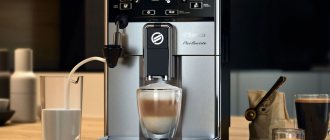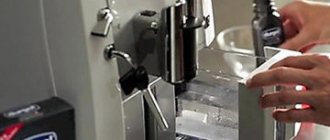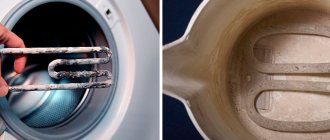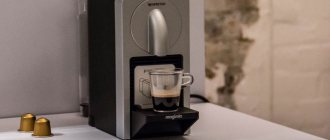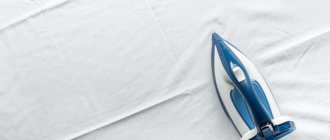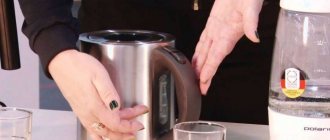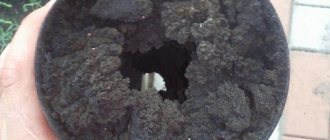To properly descale a coffee maker, both chemicals (tablets, capsules, powders) and traditional methods (such as baking soda, 9% vinegar, etc.) are used. For a positive result, it is recommended to inspect the device in a timely manner and adhere to the manufacturer’s recommendations, which are indicated in the attached instructions.
What causes a coffee machine to become dirty?
The coffee machine gets dirty faster and more heavily than any other appliance in the kitchen. It not only heats water, but also drives coffee and milk through it. Like any other device, it becomes covered with dirt and dust. You have to deal with the following types of pollution:
- External – dust, fingerprints and kitchen grease.
- Internal – scale, film from coffee oils and milk. As a result of heating, contaminants turn into solid deposits.
It is the oil in the coffee beans that creates that magnificent foam on the surface of the espresso. The other side of the coin is that with each portion of coffee prepared, the sieve inside the machine becomes clogged with oils.
How often should you clean?
Many people confuse preventative cleaning with thorough cleaning. Each time after using the coffee machine you need to:
- Rinse the holder from any remaining coffee.
- Clean and dry the steam tap.
- Rinse the milk tract using the CLEAN function (after preparing a milk drink).
In addition, you should clean the outside of the machine weekly, thoroughly rinse the milk jug, water tank and infuser.
A thorough internal cleaning of the coffee machine should be carried out at least once every six months (provided that it is rarely used). Typically, a sensor on the device lights up, indicating that the internal parts are dirty.
Thorough cleaning of the coffee machine includes:
- Decalcification (descaling).
- Cleaning from coffee oils.
- Cleaning the cappuccino maker.
- Cleaning and lubricating the brewing unit.
Devices with self-cleaning function
For “smart devices” that themselves let the user know that it’s time to clean, the following work should be performed:
Prepare a solution (strictly according to the instructions for the selected product).- The prepared liquid is poured into a tank intended for water.
- The waste container is cleaned and coffee residues are removed.
- The automatic cleaning cycle starts. In this case, you should follow all the prompts of the device itself (for example, clean the tray, add water, etc.).
You should not interfere with the operation of the device during the self-cleaning period.
How to recognize the need for a procedure?
Usually, you don’t have to wonder if your coffee machine is contaminated with scale and coffee oils. The device lights up. Can appear:
- Loud sounds when brewing coffee. If there is a large amount of contaminants, it is more difficult for the pump to move water, and it begins to operate noisier.
- Stale taste of the drink. Scale and coffee oils deposited on parts greatly degrade the taste of coffee.
- Reducing pressure. If the coffee machine is very dirty, nothing but steam will enter the cup.
- Whitish sediment in the cup. Represents scale particles. Drinking them is not only unpleasant, but also harmful to health.
- Poor performance of the cappuccino maker. A dirty coffee machine is not capable of brewing cappuccino with fluffy foam. The foam will take a long time to whip up, and the output will be large, completely unappetizing bubbles.
Cleaning the coffee machine with decalcifiers
Decalcifiers contain inorganic acids and corrosion inhibitors. They effectively dissolve solid deposits and are at the same time safe for coffee machine parts. Decalcification preparations come in liquid (concentrated or ready-to-use) and powder form. Powders are usually dissolved in 1 liter of water and the hopper is filled.
Cleaning the coffee machine with decalcifiers lasts from 20 minutes. The general principle is:
- Filling the water tank with descaling solution.
- Selecting the desired program(s).
- Cleaning. During cleaning, the solution comes out in small doses.
- Rinsing the hopper and the insides of the apparatus with 2-3 liters of clean water.
Decalcifier for Saeco coffee machines
Saeco Decalcifier is a liquid concentrate with a volume of 250 ml. To clean the coffee machine from scale, you need to pour it into an empty hopper and add 1 warm water (50-60 degrees). After this, pass 2-3 cups of water through the tube and turn off the device from the network. Wait 5 minutes and skip a few cups again.
Recommended: Can jar lids be reused?
This is repeated until the tank is empty. Then the hopper is washed, filled with fresh water, and all of it is passed through the system (the coffee machine is rinsed of any residual cleaner).
Descaling agent SVOD-TVN
The preparation for coffee machines SVOD-TVN is available in powder form. To clean the device from scale, you need to dissolve 1-2.5 measuring spoons (20-50 g) in 1 liter of warm water and fill the hopper. Prepare several cups of the drink, wait 5-10 minutes. Repeat the operation. Wash the hopper and run 2-3 liters of fresh water through the coffee machine.
Delonghi ECODECALK descaling agent
Liquid preparation. A 500 ml bottle is enough to descale your coffee machine 5 times. The product is best suited for Delonghi brand coffee machines, but can also be used for machines from other companies. Pour 100 ml of liquid into the hopper and add 1 liter of warm water. Cleaning is carried out in the standard way.
Folk remedies
Manufacturers of coffee machines warn: the use of traditional cleaning products can reduce the service life of the machine.
They emphasize that the structure of a coffee machine is more complex than that of the same boiler or kettle, and the rubber parts are thinner. Citric acid, which people love to use to clean scale, can lead to rapid deterioration of gaskets.
Many view the manufacturers' warning as a ploy to boost sales of expensive cleaners. According to reviews from ordinary people, coffee machines can be easily cleaned with lemon and vinegar.
Cleaning the coffee machine with citric acid
To descale a coffee machine, use a 25-30 g pack of citric acid. The contents of the bag are dissolved in 1 liter of hot water and the hopper is filled. If there is an automatic cleaning program, you need to press the button and place the cup under the tap. The solution will be poured out in portions. It is necessary to empty the cup periodically to prevent it from overflowing. When the cycle is completed, you will need to run clean water through the device.
Descaling with vinegar
Sometimes at home, coffee machines are cleaned with vinegar - white wine or regular table vinegar 9%. Vinegar is diluted in half with warm water, and the device is cleaned manually or automatically (in the same way as with professional means).
Causes of scale
The cause of limescale is the hardness salts CaCO3 and MgCO3 (salts of rare earth metals calcium and magnesium) that are poorly soluble in water. These compounds are formed by heating bicarbonates Ca(HCO3)2 and Mg(HCO3)2, which are part of natural water and decompose at temperatures above +40 ºС.
The reaction occurs:
Ca(HCO3)2 = CaCO3 + H2O + CO2;
Mg(HCO3)2 = MgCO3 + H2O + CO2.
If you install an ion exchange filter or a device that magnetizes water on the incoming water pipe, you can significantly reduce the deposition of hardness salts on heaters and extend the service life of not only the coffee maker, but also the boiler, kettle, washing machine and dishwasher.
How to clean a coffee machine: sequence of steps
Different types of devices have their own cleaning characteristics.
- Expensive devices have a separate program for cleaning, and everything happens automatically - you just need to pour a special product into the water tank and press the button.
- Coffee machines are easier to clean manually - through successive clicks and actions. There is no universal recipe. Each model has its own characteristics.
The sequence of actions when cleaning the coffee machine is described in the instructions for the device. Open the book and follow from point to point.
Sometimes you need to perform about 10 operations in 20 minutes. You need to be very careful, otherwise you will have to start cleaning again. The instructions describe the entire process briefly and clearly. There should be no problems with its interpretation. If the booklet is lost, the instructions can be downloaded from the Internet. You must enter into the search the name of the coffee machine and the exact model indicated on the case.
To descale your DeLonghi magnifica coffee machine:
Decalcification of the Saeco Royal coffee machine:
Descaling Philips Espresso 4300 and 5400 series models
- Tap the cleaning icons on the interface and select "Descaling" from the menu.
- Follow the instructions on the screen.
- Disconnect the LatteGo or cappuccino maker.
- Remove the drip tray and grounds container, empty them and place them back into the machine.
- Remove the reservoir and drain the water from it. Then remove the AquaClean water filter.
- Pour a whole bottle of Philips descaling solution into the water tank and then add water to the Calc/Clean line. Reinstall the reservoir.
- Place a large container (1.5 l) under the coffee and water spout.
- Press the start/stop button to start the descaling process. The descaling procedure takes approximately 30 minutes and consists of a descaling cycle and a rinsing cycle.
- Wait until the coffee machine has stopped dispensing water. Refill the water tank if a message appears on the display. The descaling procedure is completed if the coffee machine stops dispensing water.
- Install and plug in your new AquaClean water filter into your water tank.
After completing the descaling procedure, the coffee machine will remind you to install a new AquaClean filter. Using AquaClean filters means you need to descale less often.
How to clean the cappuccino maker in a coffee machine?
In addition to standard rinsing after preparing milk drinks, the cappuccino maker must be removed and washed with a special product. Need to:
- Dissolve milk film cleaner according to instructions in a bowl.
- Remove the cappuccino maker, disassemble it, and place it in a basin.
- Place the milk jug in there.
- Wait 5-10 minutes.
- Rinse the parts under the tap and install them in place.
In addition, the cappuccino maker can be washed in the dishwasher at a temperature not exceeding 50 degrees. But you cannot clean the jug this way.
Typically, the milk tract is washed by pouring diluted cleaner into the milk container. Then turn on and off the steam supply for 5-10 minutes, and rinse the unit with clean water.
Recommended: Why do I put essential oil on a toilet paper roll?
Cleaning the cappuccino maker in De'Longhi coffee machines:
If there is steam, but the milk cannot be frothed
If the device produces an impressive steam output, but the milk still does not froth, you should check the patency of the hole. It should be clean and not clogged from the last cappuccino preparation. You can clean the exit with a toothpick, acting very carefully and carefully.
In general, you should proceed like this:
- the machine is disconnected from the network;
- wait until the water in the boiler cools down a little;
- carefully remove the protective cap from the nozzle of the pannarello nozzle by turning it counterclockwise;
- carefully remove the nozzle itself;
- we try to blow it out (this will reveal the presence of a plug);
- If there is no blowing, clean the hole with a toothpick. There should be no milk residues in the canal;
- install the nozzle and protective cap back.
Cleaning the coffee machine from coffee oils
All grain coffee machines contain a brewing unit. In a carob coffee maker it looks like a horn, in a capsule coffee maker it looks like a capsule. The block can be removable or built-in.
- The removable brewing device must be removed once a week and washed with running water under the tap. After complete drying, you should install it in place.
- It is vital to clean both removable and non-removable brewing units to remove any coffee oils every 200-500 cups. This is done using special tablets that are placed in the grain compartment. “Coffee” is made from the tablet. Instead of a drink, muddy water comes out of the tap.
Popular tablets for cleaning coffee machines:
- Bosch;
- Melitta;
- Cafedem;
- Cafiza;
- Topper 3037.
Cleaning the Philips EP3243 coffee machine from coffee oils:
Cleaning waste containers
It is imperative to remove waste coffee grounds remaining after brewing. This is usually done at the end of the working day or according to the container full indication on the coffee machine display.
Waste that is not removed promptly can cause mold to form inside the coffee machine, which causes an unpleasant odor and changes in the taste of the coffee. We remove the tray and container from the coffee machine and inspect them.
Please note - literally within 3-4 days mold formed in the container. Similar places for mold to form are the lower tray for collecting system flushing waste, the tray under the cooking unit. You need to carefully monitor this and try to prevent mold from appearing. It is better to throw away waste and wash the trays every day.
What happens if cleaning is not carried out?
In the absence of regular cleaning, at best, the pressure of the dispensed drink will decrease and its taste will deteriorate. At worst, the device will break. It must be remembered that coffee deposits and scale interfere with the passage of liquid, heating of water, grinding of beans and all other processes.
The following types of malfunctions may occur:
- the machine does not turn on;
- does not heat water;
- Doesn't grind coffee.
To protect the device from careless use, some manufacturers have provided a locking function. Along with the signal that the coffee machine needs cleaning, all other buttons stop working. Users who want to taste aromatic coffee have no choice but to begin the cleansing procedure.
Prevention
You can delay the appearance of scale in your coffee machine by following just one simple rule:
Filtered drinking water must be poured into the bunker.
Under no circumstances should you use artesian or mineral water. The water must be soft, purified from salts and various impurities. Then scale will not form for a long time.
Things to remember about regular maintenance of your coffee machine:
- After brewing coffee, you need to take the time to clean the steam tap, holder and milk tract.
- If your machine has a built-in coffee grinder, keep it dry. Before adding a new portion of beans, you should wipe the compartment with a dry cloth.
- If you have a paper filter, you need to change it after each brew. The nylon filter is changed every 2 months. “Gold” filters coated with titanium nitride are considered durable and do not require replacement.

